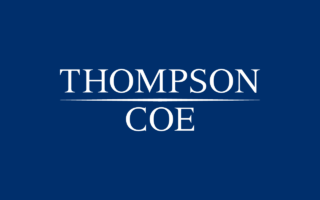Texas Supreme Court Decides There Can Be An ‘Occurrence’ as to the Insured with Regard to the Intent
Aug 12, 2002
The Texas Supreme Court recently issued its opinion in King v. Dallas Fire Ins. Co., 45 Tex. Sup. Ct. J. 715, 2002 WL 1118438 (May 30, 2002), and resolved the debate on whether an “occurrence” exists when an employer is sued in connection with the intentional acts of one of its employees. Reversing the Houston Court of Appeals, the court determined that there was an “occurrence” from the standpoint of the insured employer who was sued for negligent hiring and supervision, even though the employee intentionally injured the claimant. The decision rejects a previous rationale adopted by the Fifth Circuit that an employer’s liability for negligent hiring or supervision is “related to and interdependent on” the employee’s intentional tortious conduct, and therefore, not covered as an “occurrence.”
King was the sole proprietor of a construction company that was insured under a CGL policy issued by Dallas Fire. While working at a construction site, one of King’s employees, Carlos Lopez, got into an argument with an employee of another company over building materials at the site. Lopez allegedly attacked the other worker, kicking him in the face and causing serious injury.
The injured worker sued King, claiming that King was liable for the injuries based on the doctrine of respondeat superior, and also on King’s own negligence in hiring, training, and supervising Lopez. King forwarded suit papers to Dallas Fire, which refused to defend King because the claimant did not allege an “occurrence.” King then filed a declaratory judgment action, in which the trial court granted summary judgment to Dallas Fire. The Houston Court of Appeals affirmed that decision.
On appeal to the Texas Supreme Court, Dallas Fire argued no “occurrence” was present because the employee intentionally caused the injuries, and King’s liability was related to and interdependent with the employee’s liability, relying in part on Fifth Circuit cases construing Texas law. Dallas Fire also asserted that the “separation-of-insureds” clause did not compel the insurer to look only at the conduct of the insured seeking coverage, in this case, King, because the clause was only meant to be read in conjunction with the policy’s exclusions.
King argued there was an “occurrence” because he did not intend the injuries, regardless of what Lopez’s intentions may have been, and the separation-of-insureds clause did indeed apply to the insuring agreement. The Supreme Court disagreed with Dallas Fire that the separation-of-insureds clause only applied to policy exclusions, holding that the clause applied to all sections of the policy except the “Limits of Insurance.” Because the “separation-of-insureds” clause applied to the insuring agreement, the court analyzed whether there was an “occurrence” from the standpoint of King as if he were the only insured. The court also found fault with Dallas Fire’s argument because it would render meaningless the intended-injury exclusion, which precludes coverage for injuries “expected or intended from the standpoint of the insured.
The court reasoned that the exclusion would have no purpose if it eliminated the possibility of there being an “occurrence” whenever an intentional injury was involved, even if not directly caused by the insured. From the standpoint of King, the court determined that there was an “occurrence.” Fifth Circuit cases previously held there was no “occurrence” (and, therefore, no coverage) when the employer’s liability was “related to and interdependent on” the intentional acts of the employee. The reasoning was that there would be no cause of action against the employer were it not for the employee’s intentional acts. See, e.g., American States Ins. Co. v. Bailey, 133 F.3d 363, 371-73 (5th Cir. 1998); American Guar. & Liab. Ins. Co. v. 1906 Co., 129 F.3d 802, 810 (5th Cir. 1997). In its decision, the Texas Supreme Court stated quite bluntly that these cases do not reflect Texas law and improperly impute the actor’s intent to the insured seeking coverage.
Although the court’s opinion has removed many of the coverage issues that previously existed in situations involving intentional torts by an employee, a few unanswered questions remain. The court analyzed the “occurrence” issue in the context of the negligent hiring, training and supervision allegations made against the employer. However, it is unclear how the court’s analysis would apply where the employer is sued only for purely vicarious liability, without any independent negligence allegations against it.
Arguably, the dilemma may rarely present itself because an allegation of intentional conduct against an employee (e.g. assault) will usually conflict with an allegation that the employee was acting within the course and scope of his employment, thereby creating vicarious liability for the employer. But such a fact situation may arise, as in the case of a bouncer or security guard whose job duties may encompass such conduct.
When analyzing coverage issues under “occurrence”-type policies, especially in situations where an intentional tort is involved, the Dallas Fire opinion provides several important guidelines: (1) the “occurrence” analysis must always be evaluated from the standpoint of the insured; (2) the separation-of-insureds clause applies (in the case of a CGL policy) to all provisions, except those specifically exempted from the clause; and (3) the federal courts are not always right in their interpretations of Texas coverage law.







